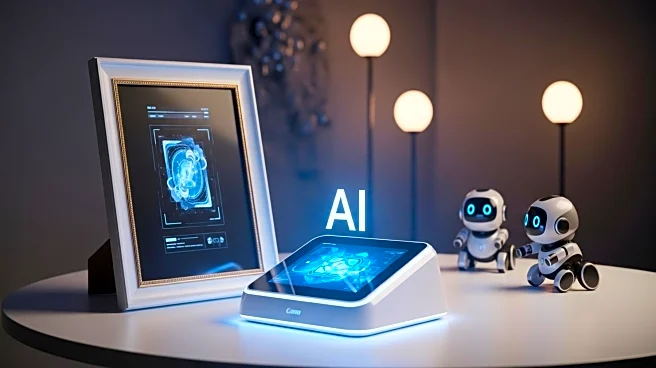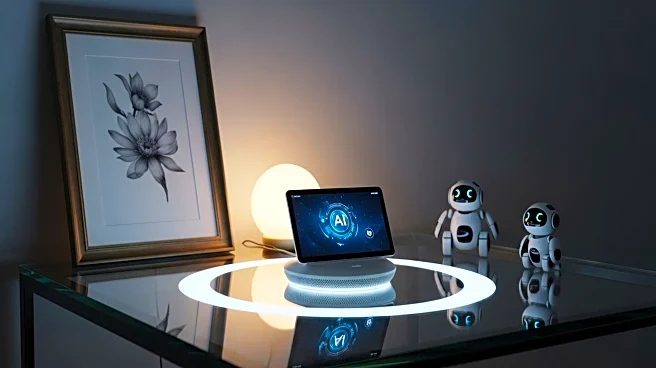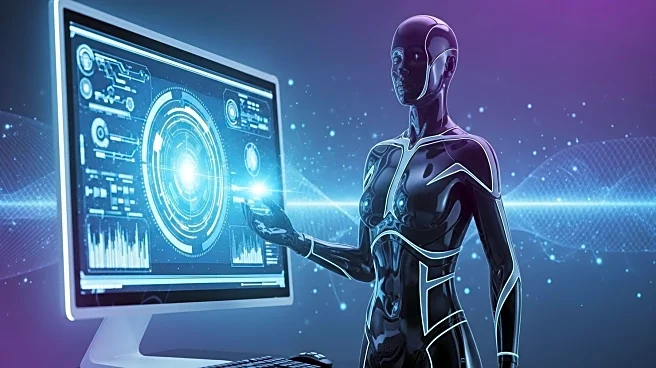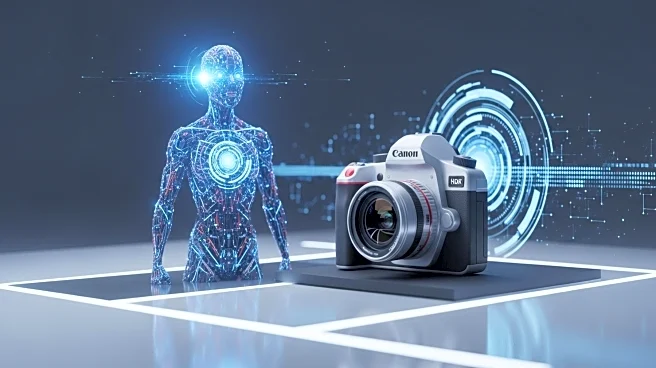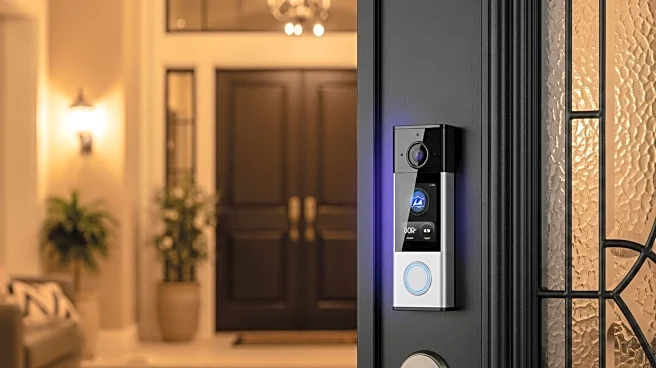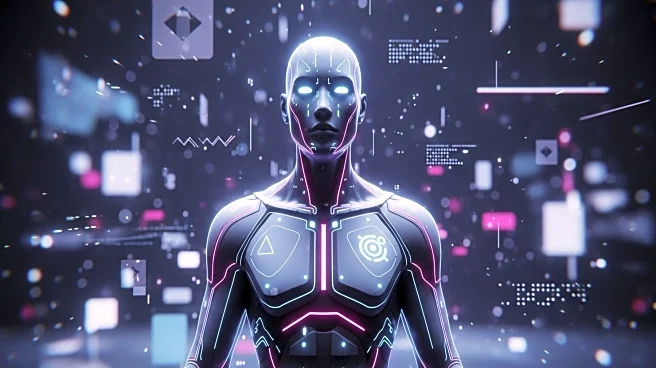What's Happening?
SwitchBot has introduced a new lineup of AI-driven smart home devices at the IFA 2025 tech expo in Berlin. The lineup includes the SwitchBot AI Hub, AI Art Frame, and two AI-powered robot pets named Noa and Niko. The AI Hub is described as the world's first smart home edge hub with a Vision Language Model (VLM), capable of interpreting home events and automating responses. The AI Art Frame uses a color E-Ink display to generate artwork from text prompts or display personal photos, offering a long battery life of up to two years. Noa and Niko, part of the 'Kata Friends' series, are designed to provide emotional companionship, recognizing faces and responding to human emotions. These innovations aim to integrate AI into everyday home environments, enhancing interactivity and personalization.
Why It's Important?
The introduction of these AI-powered devices by SwitchBot signifies a shift towards more intelligent and interactive smart home environments. The AI Hub's ability to process events locally and maintain privacy could appeal to consumers concerned about data security. The AI Art Frame's innovative use of E-Ink technology offers a sustainable and versatile approach to home decor, potentially transforming how art is displayed in homes. Meanwhile, the robot pets Noa and Niko could redefine companionship in smart homes, providing emotional support and interaction. These developments could challenge existing smart home ecosystems dominated by major tech companies, pushing the industry towards more personalized and privacy-focused solutions.
What's Next?
SwitchBot plans to ship the AI Art Frame by November 2025, with pricing yet to be announced. The AI Hub and robot pets are still in the concept stage, with no confirmed release dates. The success of these products will depend on their market reception and pricing strategy. If successful, SwitchBot could establish itself as a significant player in the smart home market, potentially influencing other companies to adopt similar privacy-focused and interactive technologies. The industry may see increased competition and innovation as companies strive to meet consumer demand for more intelligent and empathetic home environments.
Beyond the Headlines
The ethical implications of AI-driven companionship, as seen with Noa and Niko, raise questions about the role of robots in human emotional well-being. As these technologies become more integrated into daily life, societal norms around companionship and privacy may evolve. Additionally, the AI Art Frame's ability to generate art on demand could impact the traditional art market, challenging perceptions of creativity and authorship. These developments highlight the need for ongoing discussions about the cultural and ethical dimensions of AI in the home.

